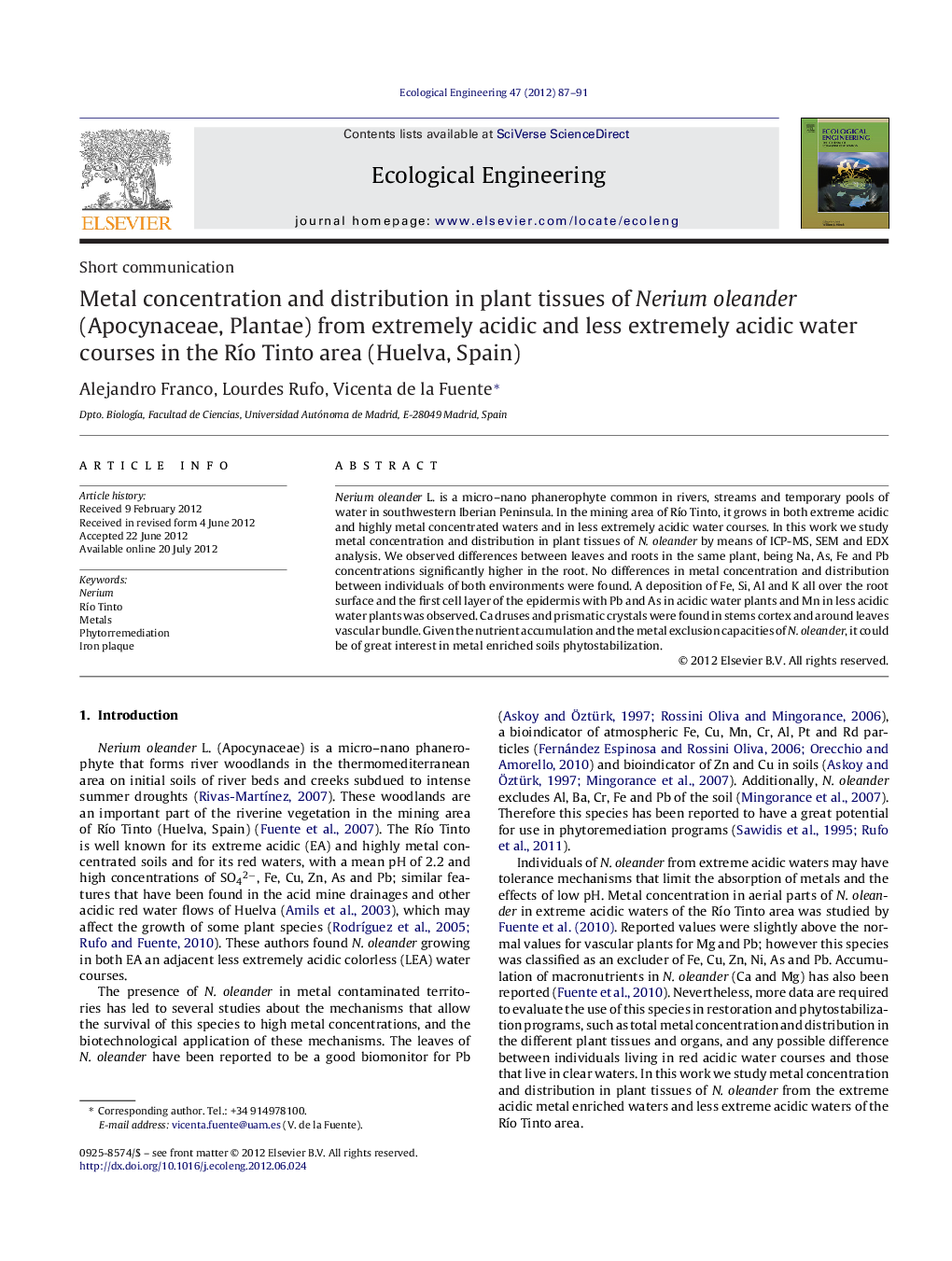| Article ID | Journal | Published Year | Pages | File Type |
|---|---|---|---|---|
| 4390003 | Ecological Engineering | 2012 | 5 Pages |
Nerium oleander L. is a micro–nano phanerophyte common in rivers, streams and temporary pools of water in southwestern Iberian Peninsula. In the mining area of Río Tinto, it grows in both extreme acidic and highly metal concentrated waters and in less extremely acidic water courses. In this work we study metal concentration and distribution in plant tissues of N. oleander by means of ICP-MS, SEM and EDX analysis. We observed differences between leaves and roots in the same plant, being Na, As, Fe and Pb concentrations significantly higher in the root. No differences in metal concentration and distribution between individuals of both environments were found. A deposition of Fe, Si, Al and K all over the root surface and the first cell layer of the epidermis with Pb and As in acidic water plants and Mn in less acidic water plants was observed. Ca druses and prismatic crystals were found in stems cortex and around leaves vascular bundle. Given the nutrient accumulation and the metal exclusion capacities of N. oleander, it could be of great interest in metal enriched soils phytostabilization.
► We analyzed the metal content of N. oleander from the Rio Tinto area by ICP-MS. ► We analyzed the distribution of metals in N. oleander tissues by SEM. ► Metals are excluded from aerial tissues and retained in the roots. ► There are no differences between individuals from extremely acid and less extreme acid waters. ► We observed the presence of an iron plaque over the root epidermis.
